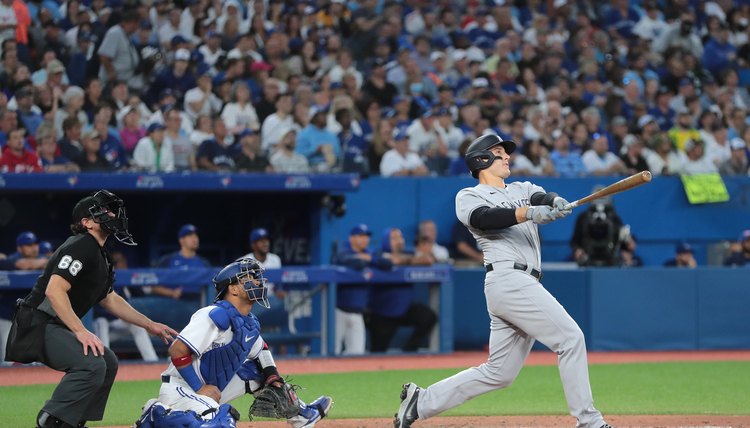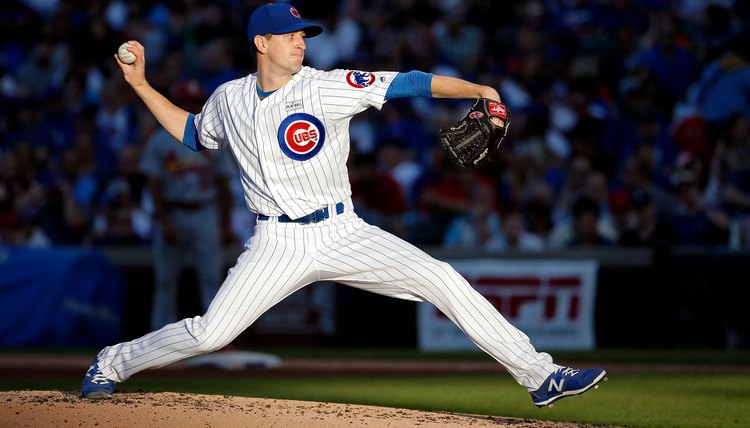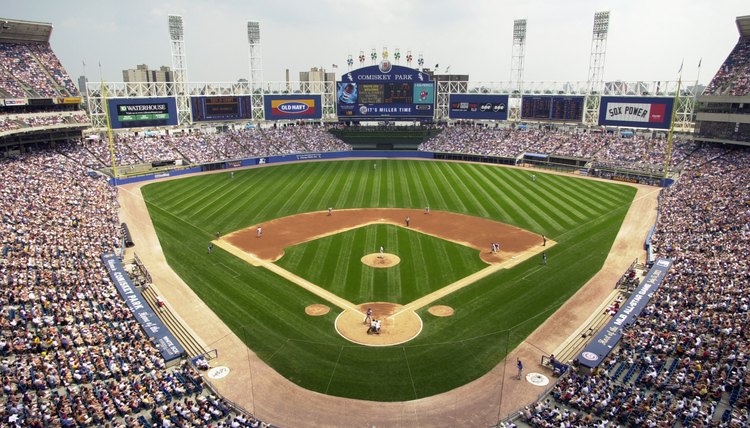Left Handed Batter Vs. a Right Handed Pitcher

Roughly 15 to 20 percent of the adult male general population is left-handed, but more than 40 percent of plate appearances in major league baseball are taken by left-handed batters. A key reason for this discrepancy is the advantage lefties typically have when facing right-handed pitchers.
This matchup advantage may even be part of the reason that so many of baseball's all-time great hitters and Hall of Fame players have been lefties, including Ty Cobb, Babe Ruth, Lou Gehrig, Ted Williams, Stan Musial, Rod Carew, Tony Gwynn and Ken Griffey Jr.
Southpaws Have the Edge
Lefties begin their at-bats about one step closer to first base simply based on their positioning in the batter’s box, making it easier for them to leg out infield singles. Also, players tend to pull the ball, so lefties often hit the ball between first and second base on the right side of the infield. That gives them a large gap to shoot for when the first baseman holds a runner on base.
Finally, batters tend to perform better against opposite-hand throwing pitchers, and there are more right-handed pitchers than left-handed pitchers. From 2007 through 2012, for example, the batting average of lefties in the MLB was .268 against right-handed pitchers, while right-handed batters hit .251 against right-handed hurlers.

Playing the Curve
The main reason left-handed hitters prefer to hit against right-handers is that breaking pitches will curve toward the batter, which makes them easier to hit. When a left-handed batter faces a lefty pitcher, breaking balls bend away. The hitter is likely to take a weaker swing as he lunges after the ball going toward the other side of the plate.
Additionally, the left-hander’s curve ball may travel straight toward a lefty hitter before the ball begins to break. The batter -- particularly at youth levels -- may instinctively back off of home plate to avoid being hit, leaving him no chance to connect if it curves over the plate for a strike.
Pitching Strategies
A right-handed pitcher, or RHP, as they are often labeled, can negate a left-handed batter’s edge by throwing a screwball, which breaks in the opposite direction as a curve. Few pitchers throw screwballs, however, because the pitch is hard to master and puts a strain on the arm.
In the big leagues, many right-handed pitchers can put some tailing action on their fastballs, causing them to bend slightly away from lefty hitters. Righties may also try to hit the outside corner with curve balls, hoping the left-handed hitter will give up on the pitch because he believes it will be outside the strike zone.

Defensive Alignments
A left-handed batter vs. a right-handed pitcher usually leads to a defensive adjustment. The fielders playing third base, shortstop, second base and first base will shade about one step toward the hole between first and second base, and outfielders move several steps toward the right field foul line.
This is a sound strategy if you’re not familiar with the hitter, especially in the early innings of a game, season or series. But it may need some changes depending on the batter's characteristics.
If your pitcher throws harder than average, for example, the hitter is less likely to pull the ball, even if he’s a lefty. Additionally, some hitters have enough skill to strategically hit the ball to the opposite field, which for a left-handed hitter would be towards the left side of the diamond.
Writer Bio
M.L. Rose has worked as a print and online journalist for more than 20 years. He has contributed to a variety of national and local publications, specializing in sports writing. Rose holds a B.A. in communications.
